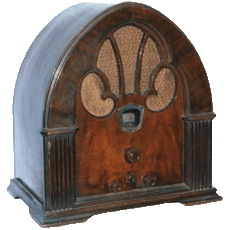02-06-2012, 10:15 PM
hi my name's ben and i just picked my first tube radio yesterday at a local flea market for virtually nothing. looks like its complete. i had to re-cord it as the old one on it had pretty much rotted away. i started out trying to rehabilitate this little guy; cleaning some connections with deoxit along with the power/volume pot.
i really just want to get this philco back up and running again just to challenge myself. i've never worked on anything with tubes nor have i worked on anything this old before.
i started out in the home audio scene about 6 years ago when i was 13 and bought my first stereo receiver, a pioneer sx202. i've stepped up a bit over the last couple of years, acquiring some of my favourite vintage pioneer stereo equipment from the 70's including a very nice (and powerful) sx-950.
anywho back to the PHILCO 8)
when i first plugged it in the backlight would flicker a bit sometimes staying on for about 5 seconds then turning off again. today i've managed to get the light to stay on and im getting a low hum/buzz from the speaker. the sound im getting doesn't seem to be affected by either the volume or the tuner know, its just a consistent sound im getting.
i then noticed a loose wire (see pic) coming off one of the tube terminals.
i have found a schematic for this radio. i've found one for what i think is sorta of like the american version of mine which is some thing like model 42-PT-25 or something along those lines.
heres some pictures.
Note from site admin: Sorry, but the photos which were attached to this post are no longer available.
i really just want to get this philco back up and running again just to challenge myself. i've never worked on anything with tubes nor have i worked on anything this old before.
i started out in the home audio scene about 6 years ago when i was 13 and bought my first stereo receiver, a pioneer sx202. i've stepped up a bit over the last couple of years, acquiring some of my favourite vintage pioneer stereo equipment from the 70's including a very nice (and powerful) sx-950.
anywho back to the PHILCO 8)
when i first plugged it in the backlight would flicker a bit sometimes staying on for about 5 seconds then turning off again. today i've managed to get the light to stay on and im getting a low hum/buzz from the speaker. the sound im getting doesn't seem to be affected by either the volume or the tuner know, its just a consistent sound im getting.
i then noticed a loose wire (see pic) coming off one of the tube terminals.
i have found a schematic for this radio. i've found one for what i think is sorta of like the american version of mine which is some thing like model 42-PT-25 or something along those lines.
heres some pictures.
Note from site admin: Sorry, but the photos which were attached to this post are no longer available.



![[-] [-]](https://philcoradio.com/phorum/images/bootbb/collapse.png)


